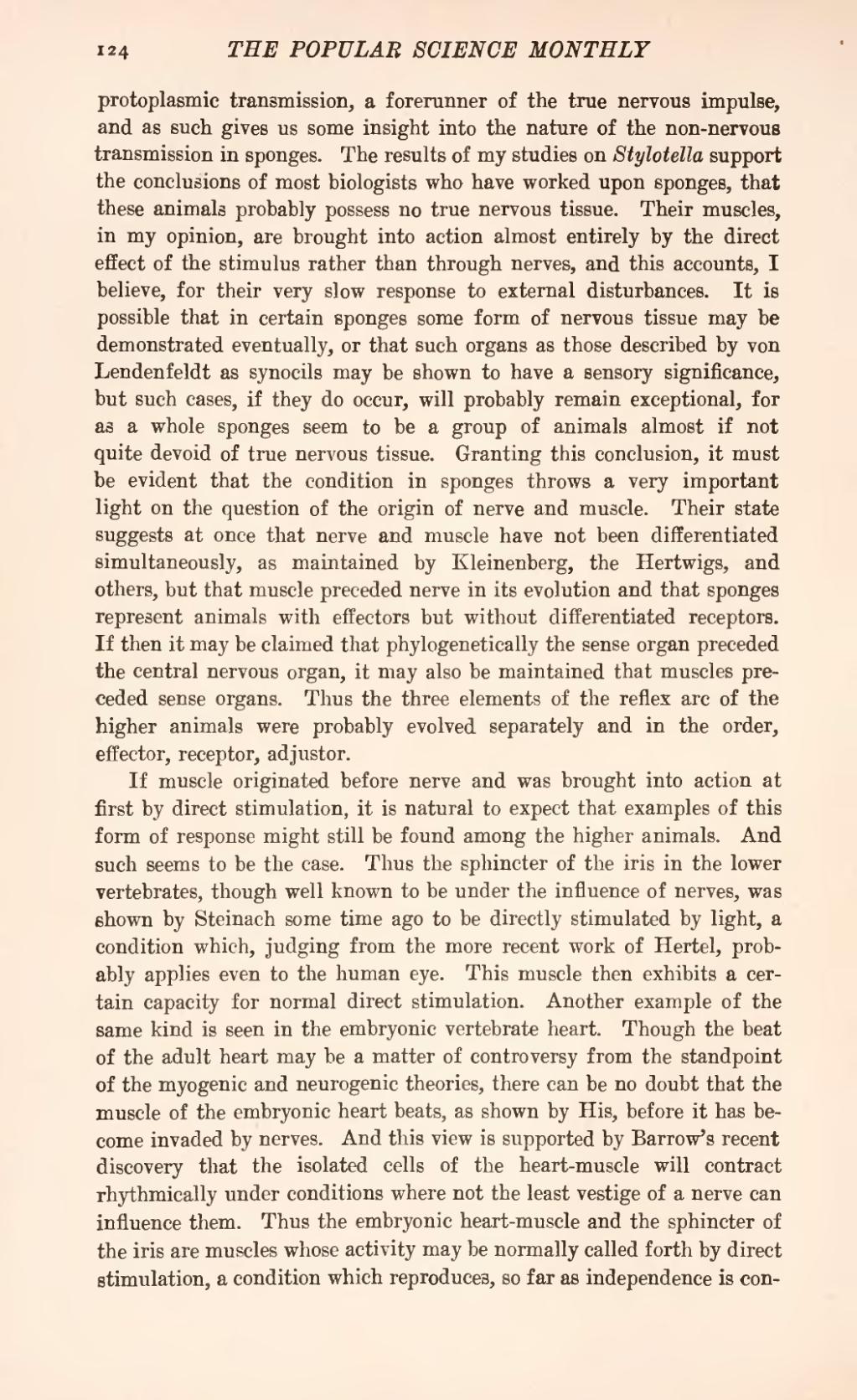protoplasmic transmission, a forerunner of the true nervous impulse, and as such gives us some insight into the nature of the non-nervous transmission in sponges. The results of my studies on Stylotella support the conclusions of most biologists who have worked upon sponges, that these animals probably possess no true nervous tissue. Their muscles, in my opinion, are brought into action almost entirely by the direct effect of the stimulus rather than through nerves, and this accounts, I believe, for their very slow response to external disturbances. It is possible that in certain sponges some form of nervous tissue may be demonstrated eventually, or that such organs as those described by von Lendenfeldt as synocils may be shown to have a sensory significance, but such cases, if they do occur, will probably remain exceptional, for as a whole sponges seem to be a group of animals almost if not quite devoid of true nervous tissue. Granting this conclusion, it must be evident that the condition in sponges throws a very important light on the question of the origin of nerve and muscle. Their state suggests at once that nerve and muscle have not been differentiated simultaneously, as maintained by Kleinenberg, the Hertwigs, and others, but that muscle preceded nerve in its evolution and that sponges represent animals with effectors but without differentiated receptors. If then it may be claimed that phylogenetically the sense organ preceded the central nervous organ, it may also be maintained that muscles preceded sense organs. Thus the three elements of the reflex arc of the higher animals were probably evolved separately and in the order, effector, receptor, adjustor.
If muscle originated before nerve and was brought into action at first by direct stimulation, it is natural to expect that examples of this form of response might still be found among the higher animals. And such seems to be the case. Thus the sphincter of the iris in the lower vertebrates, though well known to be under the influence of nerves, was shown by Steinach some time ago to be directly stimulated by light, a condition which, judging from the more recent work of Hertel, probably applies even to the human eye. This muscle then exhibits a certain capacity for normal direct stimulation. Another example of the same kind is seen in the embryonic vertebrate heart. Though the beat of the adult heart may be a matter of controversy from the standpoint of the myogenic and neurogenic theories, there can be no doubt that the muscle of the embryonic heart beats, as shown by His, before it has become invaded by nerves. And this view is supported by Barrow's recent discovery that the isolated cells of the heart-muscle will contract rhythmically under conditions where not the least vestige of a nerve can influence them. Thus the embryonic heart-muscle and the sphincter of the iris are muscles whose activity may be normally called forth by direct stimulation, a condition which reproduces, so far as independence is con-
